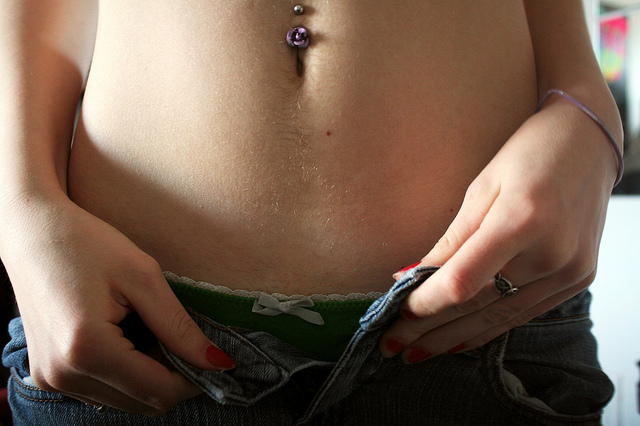
Every time I tell someone that I teach yoga, there are a few standard questions or comments I get right off the bat.
“Wow, you must be really flexible!”
I’m flexible, but I’m not a contortionist, which is what they’re really asking. And because they seem disappointed when I clarify, I just feign modesty and don’t give a clear answer.
“Can you do all those crazy pretzel moves?!”
Well, some I can, and some I can’t, and does it really matter?
“Have you heard of ‘fill-in-the-blank-with-any-yoga-hybrid-you’ve-ever-heard-of?'”
Breakti (breakdancing and yoga). Koga (kickboxing and yoga). Roga (running and yoga). Broga (yoga for bros). SUP yoga (standup paddleboard yoga). Acroyoga. Yogilates.
But the leading question I am asked is, “Do you do hot!?”
People ask this with a flicker of excitement in their eyes. My answer will be the deciding factor of whether or not this dialogue is worth continuing—as if yoga is only interesting if it is not the “mainstream.” Only if you add a body of water or maybe a bungee jump is it worth learning about.
It is at this point that I have to decide how to answer.
Should I be authentic (which I try really hard to be) and tell them exactly what I think of hot yoga and potentially educate them about yoga in the process? Or do I just avoid potential confrontation (which is what I’d rather do, because it’s easier) and smile and say no, in which case I have utterly disappointed them and robbed them of a pretty cool conversation?
So here’s the truth: I have never been a proponent of the hot yoga trend.
I could be really nice and say it’s just not for me, or I could be real and say that I think it’s stupid.
Yeah, that would be more accurate.
Hot yoga in its original form began as what we came to know of as Bikram yoga, a form of yoga involving 26 poses practiced in a 104-degree room. It was developed and commercialized by Bikram Choudhury, who began his yoga training at the age of four and won his first of many Indian national yoga championships at the age of 13.
He went on to develop and copyright his own “brand” of yoga, and for years, only those teachers trained specifically by Bikram himself could teach it (an appellate court has since ruled that a sequence of poses cannot be copyrighted).
Bikram has claimed that the 26 poses that comprise his practice, held in the 104-degree room, are appropriate for “any age group.”
I’m guessing Bikram hasn’t met the large number of people who would disagree with him, like my 70-year-old parents.
According to Bikram, “You will not get the intended benefits until it is done 100 percent correct,” and he is renowned for shouting at students to “lock the knee! lock the knee!” He even refers to his studios as “Bikram’s Torture Chambers.”
None of that sounds like yoga to me.
That was the birth of the hot yoga movement that everyone gets so excited about these days. Now, studios everywhere offer their own versions of hot or heated yoga—some 60-minute classes, some 90.
But I’m not really sure why the hype has grown the way it has. People have long loved the quick solution, the faster result, and I guess people equate more sweating with more benefit? Maybe sweating hard without working as hard still equates to the “kickass workout” everyone wants.
To form a fair opinion, I have taken a hot yoga class. Twice. I hated it. The teacher was great, and the assigned poses she put us through were reasonable.
What really sucked was the heat. Simply being in that heat made me feel sick—like my lungs were scorching and my stomach contents were on a slow simmer. Just lying on my mat before beginning the practice, I thought to myself, This is, without a doubt, the dumbest thing I’ve ever done.
And that was before I started moving.
Watching myself in the wall of mirrors (which I also hate), I was mesmerized by the pace of the sweat dripping from my chin and elbows and fingertips. As a nurse, I thought, This is not okay. My sweat dripped faster than a leaky faucet, like an IV drip. And I wasn’t even fully exerting myself! My only exertion was in fighting my dizziness and nausea.
Coming out of the class, everyone was unhealthily red in the face, neck, and chest, and through the din, I could hear people talking about how great they felt and what an awesome workout they had. I wanted to yell over all of them, “I call bullsh*t! There is no way any of you feel great right now.”
And, maybe a couple of them did, but most of us, assuredly, did not.
Hot yoga is portrayed as a great way to detoxify by flushing out toxins through sweat. Well, although small amounts of toxins are released through sweat, sweating is the most inefficient way of detoxifying ever.
That is what our kidneys and livers do. Like, that is their sole job description.
And, ironically, in order to do their jobs well, they need hydration. We sweat for one main reason: to cool off. Sweating is our built-in air conditioning system. And we are cooled through the process of evaporating. Once we are dripping sweat at that rate, evaporation stops and we are simply dehydrating and overheating.
And not detoxifying.
What I find interesting is that every Independence Day, communities hold day-long picnics, concerts, and celebrations outside in temperatures that often aren’t even as high as a hot yoga room. And at those events, ambulances, fire trucks, EMTs, and all sorts of medical personnel are on stand-by in case people get…what?
Overheated.
Every summer down South, news stations warn people to stay indoors during high temperature days, reminding them to stay hydrated. Outdoor dogs are kept indoors and kids don’t go out to play. Heat stroke is a real risk.
But, all that logic goes out the window in the frenzied rush of the trend that is hot yoga.
I wonder, if sweating is that important to the “workout,” why isn’t the gym or any other exercise facility heated to 104 degrees? Or barre class? Or your kids’ gymnastics class? Why just yoga?
Somebody tell me that, and I might just shut up.
So, what is my point?
I understand the need to market yoga in a way that is new and exciting—I really do.
Go running with a group to a quiet spot with a great view to do your practice; throw in some amazing stunts with a partner; practice on a stand up paddleboard on the water—it’s all good. If that’s your scene, do it. Have fun with it.
Honestly, I would love to try the flying yoga where you’re suspended in all those fabric thingies. Maybe someday I will.
All those types of yoga are safe and can make your practice more enjoyable, if your personality needs something different and daring.
But these forms of yoga are the exception, not the norm—and hot yoga should always be considered the exception, too.
When considering hot yoga, use common sense. In both fitness and enlightenment, there are no shortcuts. Sweating faster and more doesn’t equal better exercise or deeper relaxation, and potentially could be dangerous. Think about what high temperatures make you feel like in every other situation besides the yoga room, and make your decision accordingly.
And, remember: just because it’s trendy, doesn’t mean it’s better or even safe.
~
~
Author: Amy Bradley
Image: Max Charping/Flickr
Editor: Callie Rushton
Copy Editor: Travis May
Social Editor: Yoli Ramazzina








Read 13 comments and reply